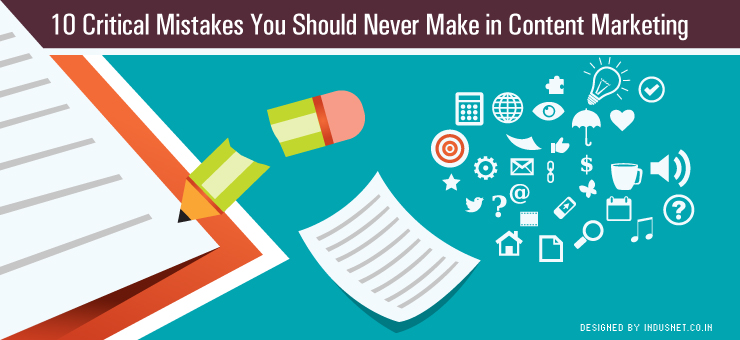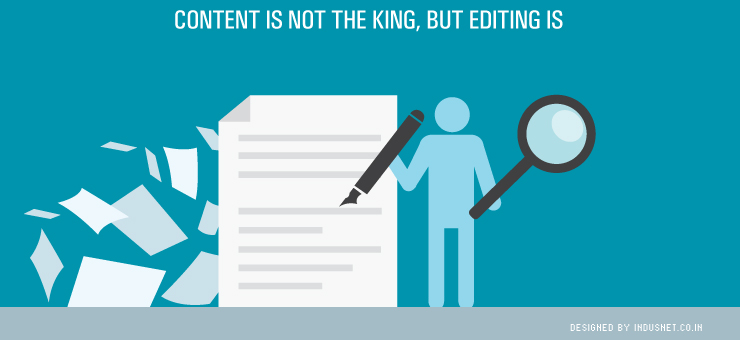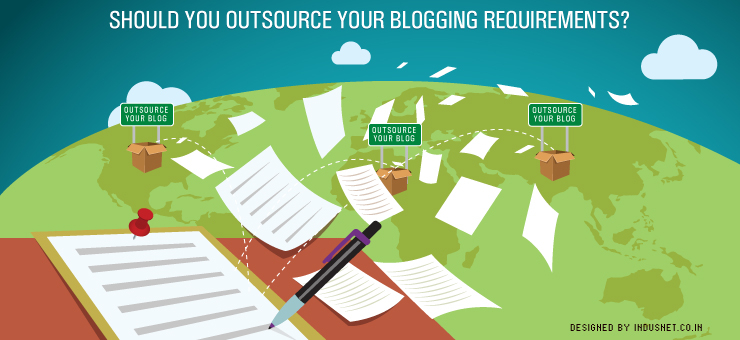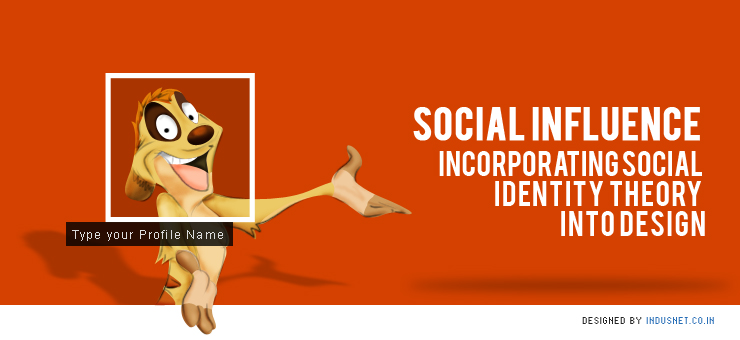
10 Critical Mistakes You Should Never Make in Content Marketing
Content marketing is the most essential marketing tactic used to deliver content to a focused target group. Whether it is used for social media marketing, SEO content delivery or email marketing, content used needs to be to-the-point, relevant and generate value for the reader. You need to classify your content to align with your target groups to get yourself heard. It is important to share valuable content to get noticed and ensure repeated visits from your customers. A good content marketing strategy does not go in vain and promises to build brand, create awareness and generate sales for your company. It clearly shows that utmost care is required while creating and delivering content. Content marketing needs to be backed by due diligence and well thought-out strategy but many marketers, knowingly or unknowingly, fail in content marketing. This article will highlight ten critical mistakes often made by marketers and what you can do to avoid them. 1. Irrelevance While creating content, a marketer needs to make sure that he is sharing something significant and different. It needs to be used to educate the consumer. It might not necessarily discuss about your product or company but anything what you feel is suitable for your audience. Sharing repetitive content puts off the reader and you are no different from others. Another important thing is to bear your target audience in mind before content creation. Many marketers fail to do so as their focus turns towards delivering superior content full of jargons in a bid to impress their readers or to outperform their competitors. In the end, the content bores and does not create any impact on the target audience. Narrow down the tone to what that resounds with the audience. 2. Non-sharable content The content becomes sharable only when it is able to beat the clutter. A reader impressed by your content will definitely take that extra step to share the content with his friends through social media and email. The information shared needs to be supported by facts and figures & true to your personal experience. Your content needs to include relevant links to be shared on Twitter, Google+, Facebook etc. You can also improve the visual design of your content by creating appropriate infographics (often used for sharing on Pinterest). Make your website and blog content sharable by using tools like “click to follow us on Facebook”, “click to share” and “click to tweet”. 3. Pushing too much content Marketers misguidedly think that posting excessive information will help them to get closer to their audience faster. You need to remember that there is no such race in content marketing. It is a gradual process and takes time to build reputation. If you start posting frequently, you will lose credibility and the readers are very likely to skip your content. Assume that your readers are a busy lot and hardly pay attention to your content initially. Post powerful content at regular but “not frequent” intervals to win your audience. 4. Posting too short a content piece A genuine marketer always values his audience’s time. If you are able to create valuable content of sufficient length, your audience can easily spare you 5-10 minutes. Make sure that you create a resourceful content full of sources and highlights. Short content pieces hardly share anything in detail and are just a waste of time for the readers. In-depth and original content is very likely to get you higher search engine ranking. Moreover, many content marketers are looking for options to monetize their content not for the sake of profit but to recover cost of production and more importantly, gain credibility. 5. Poor content quality The language and expression is utterly crucial while creating content. There is no room for spelling and grammatical mistakes. Proofread your content several times and avoid committing typo errors besides giving care to intricate details like punctuation. Use short paragraphs and sub-headings to improve readability. Use bullet points wherever possible. Poor titles often play a spoilsport for many content marketers. The best of the content goes amiss with an unsuitable title. Carefully think over your title before rushing to publish it. 6. Weak PR skills Content marketing is not just about creating great content with SEO tactics. Marketers need to build relationship with blog owners, social media profile owners and other suitable website owners to reach out to their target audience. Many marketers fail to pay attention to building personal rapport with the owners; and the result is too bad for a deserving piece of content. Nurture these free media openings to post your content and form a symbiosis. Aggressively posting your links on different sites for generating clicks is not how a content marketer needs to proceed. Take time to identify the right partners for building a long-term relationship. Use the power of SEO tactics and PR skills together to step ahead. 7. Choosing wrong venues of content placement Posting your content on Facebook is of no use, if your audience is not on Facebook; and even if they are present on Facebook, they won’t find it an appropriate platform for reading your content or probably sharing it with their friends. Focus on other venues like LinkedIn, emailing newsletters etc. to share content. Besides that, some marketers choose blogs that host low-quality content, perhaps, because they are easy to approach or just to do some good to others. In their bid to help other blog owners with quality content, such brands often end up biting the dust. The problem could be that your audience does not visit those blogs or even if they do start visiting, they might not like to stay longer as the majority content is low-quality. 8. Choosing the wrong medium Content marketing is not limited to creating informative articles and posting them to blogs. It is also not limited to creating videos and posting them on YouTube. The idea is to expand the reach of your content by sharing it on appropriate medium. If your audience is field sales force, delivering content through








